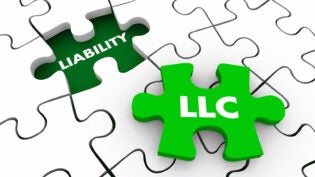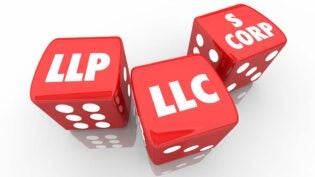
Keep in mind that a corporation, whether an S corporation or a C corporation, is a legal entity separate and distinct from its owners. This is unlike the situation with a proprietorship or partnership, in which the business and its owners are not treated as separate entities but are one and the same. Therefore, the owners of the corporation must take extreme care to keep personal transactions separate from business transactions and to follow legal procedures for the corporation.
This article will discuss four pitfalls that S corporation owners must avoid:
- Failure to keep minutes.
- Failure to separate personal assets.
- Shareholder loans.
- Lack of basis.
Certain actions are reserved for the shareholders. These actions occur at a meeting of the shareholders—a shareholder has no authority outside an official meeting of the shareholders. This should not be confused with the meetings of the board of directors. The shareholders are charged with the responsibility to elect and remove directors, amend the articles of incorporation and bylaws, approve the sale of all or substantially all of the corporate assets, approve mergers and reorganizations, and dissolve the corporation. These are often infrequent events so the amount of record-keeping should not be burdensome.
Another set of actions are reserved for the board of directors. Typical actions of the board include:
a. Authorizing the issuance of stock.
b. Electing the corporate officers.
c. Setting officer and key employee salary amounts.
d. Deciding whether to mortgage, sell, or lease real estate.
e. Approving loans to or from the corporation.Authorizing bank accounts.
f. Any material matter facing the corporation.
Any of the above actions by the stockholders or the board require proper approval and should be reflected in the appropriate minutes. This is true even if the stock is owned by one individual who is also an employee and board member. The minutes do not need to be elaborate, but they do need to be in writing and reflect the actions of the stockholders or board. State laws vary regarding how often meetings, must occur, how many directors a corporation must have, and the format of the meetings (in-person, telephone, meetings by consent, etc.).
2. A second issue is the failure to separate personal transactions from corporate transactions. Intermingling the two is referred to a piercing the corporate veil. Keep in mind that the corporation is not a personal checkbook and personal obligations must not be paid out of corporate funds. Likewise, property should be owned by the corporation and any debt associated with that property should be corporate debt. This may require a transfer of personal assets to the corporation upon its founding and should be reflected in the corporate minutes.
Failure to document shareholder loans to and from the corporation is another pitfall that many corporations encounter. First, these loans require board approval. Secondly, they should be separated into “Due to” and “Due from” shareholder accounts on the books. Due to or due from loans should not be used indiscriminately to balance the balance sheet.
3. These shareholder loans must be documented by a promissory note. This note should contain repayment terms. Additionally, if the amount of loans exceeds $20,000 at any time during the year, the note must bear interest. Failure to include a required interest component could result in imputed interest to the shareholder and a failure to report the interest income and expense on tax returns for the shareholder and the corporation.
4. A final pitfall to be considered is the issue of the stockholder’s basis in the corporation. Basis is simply the owner’s investment in the corporation. However, it can be much more complicated as inside and outside basis must be considered. Frequently the two are the same.
While this is an oversimplification, outside basis is maintained by the taxpayer and represents the owners’ original investment plus profits minus loses and distributions. Inside basis is maintained on the books of the entity. Inside tax basis is the initial investment (cash or the value of other assets) plus profits minus loses and distributions. Losses in excess of basis cannot be deducted on the individual tax return of the owners. This matter will be dealt with in more detail in the future.
It is a good policy to meet with your tax advisor before the end of the tax year to see if there are any issues for the corporation that require action prior to the end of the year. This will help to avoid or minimize any unpleasant tax consequences.
In accordance with Circular 230 Disclosure
This article was originally published by TaxConnections
Author: John Stancil is the recently retired Professor of Accounting and Tax at Florida Southern College in Lakeland, FL. He is a CPA, CMA, and CFM and passed all exams on the first attempt. He holds a DBA from the University of Memphis and the MBA from the University of Georgia. He has maintained a CPA practice since 1979 with an emphasis in taxation. His areas of expertise include church and clergy tax issues and the foreign earned income credit. He prepares all types of returns, individual and business.
3357 Views












